
Preface
I originally started this blog to write about my search to find Damiana growing in its native habitat in Baja California, Mexico. But in my regular loquacious manner, it has become a travelogue (and a chance to show off some photos). If it Damiana that you are interested in, just scroll down to the Damiana section (March 19). Sometime in the near future, I hope to add a downloadable Damiana monograph. ~7Song
March 2019-Starting in Los Angeles
I arrived in Los Angeles the second week of March to teach some classes, and to see the work my friend and former student Abbe Findley was doing. And most importantly, take a trip with her to see if we could find Damiana (Turnera diffusa) in the southern tip of Baja California, Mexico.
I taught a few classes in Abbe’s small shop in Highland Park and also went with her to where she volunteers in Skid Row working on homeless people’s feet. It is very inspiring work, helping folks who have little medical access and are on their feet all the time, a very useful service.

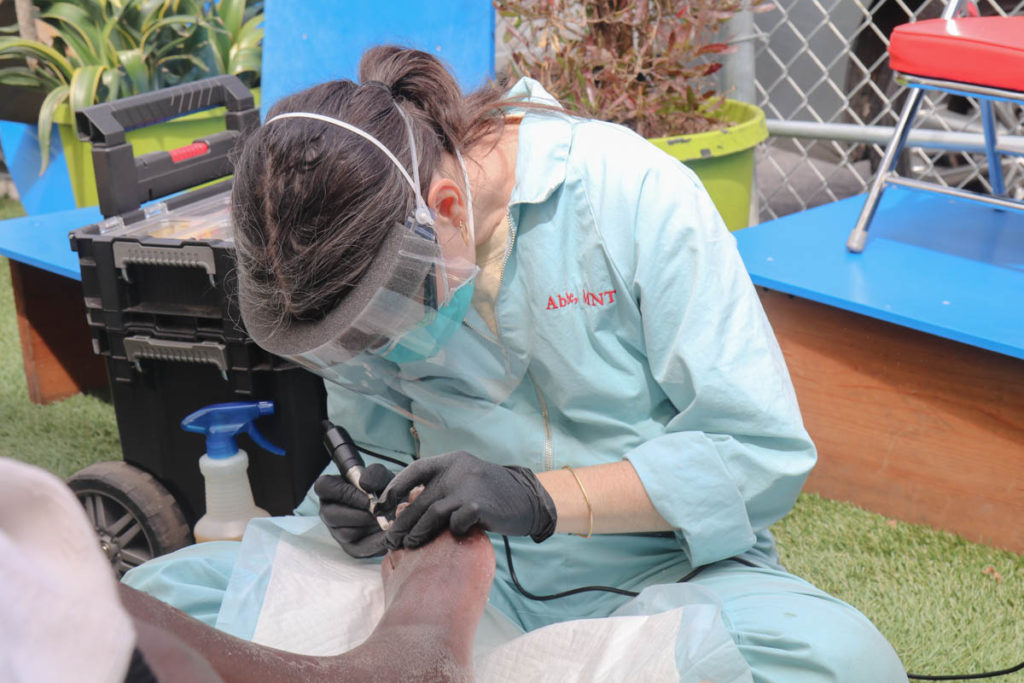
The region was in a ‘superbloom’ after abundant winter rains, so I went with my friend Eden to the Coachella Valley Preserve and indeed the desert wildflower bloom was amazing.

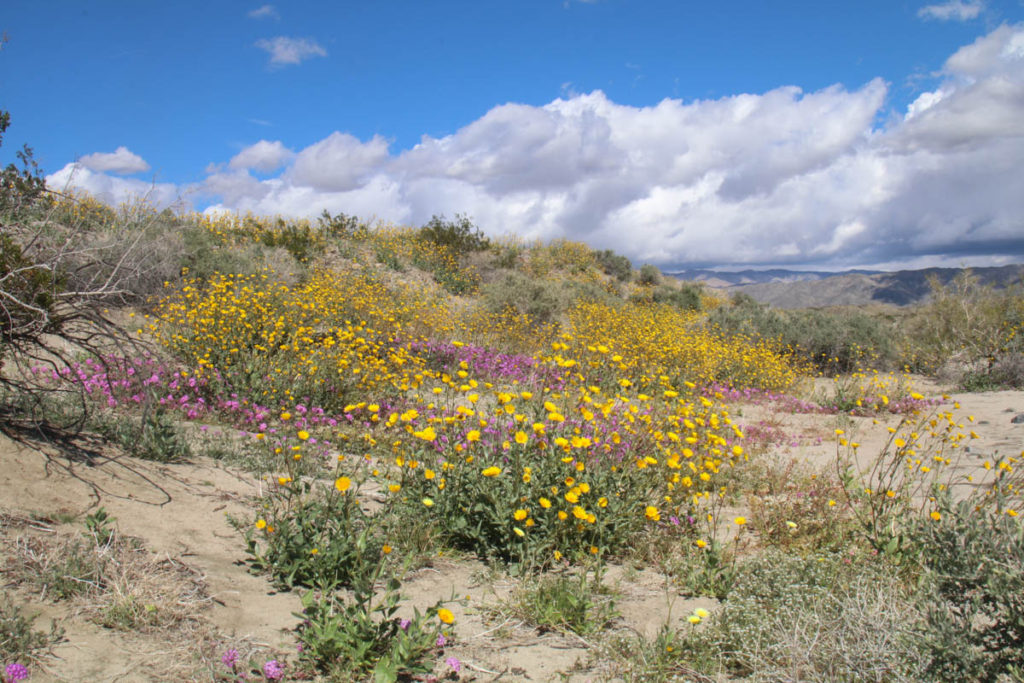
Field and Travel Guides
While Damiana was on Abbe and mine’s most-hoping-to-see list, I am interested in learning the name of almost any new plant I meet and I had a few excellent floras for this trip. (Note-a flora is a plant field guide that has all of the plants of a region.) The Flora of Baja California by Wiggins (1980) had the most complete taxonomic key for the region and was indispensable for figuring out new plants. Also very useful was the Baja California Plant Field Guide by Rebman and Roberts (2012), which has color photos and detailed descriptions of many Baja plants including Damiana. Having a good plant field guide increases my interest considerably of any place I visit.
For figuring out where to stay, we used the internet (of course) and also the Baja Moon Guidebook and the Traveler’s Guide to Camping Mexico’s Baja by the Church’s which is geared toward RVs but was occasionally helpful for camping (and occasionally way off the mark, see San Ignacio entry).
At the top of the below pile of books is the journal I carry on me to write down any of the plant names I learned as well as details of the trip. I would later write some of the notes on my laptop so that if I eventually wrote about this trip (it is now 9 months later), I wouldn’t have to rely on my faulty memory.
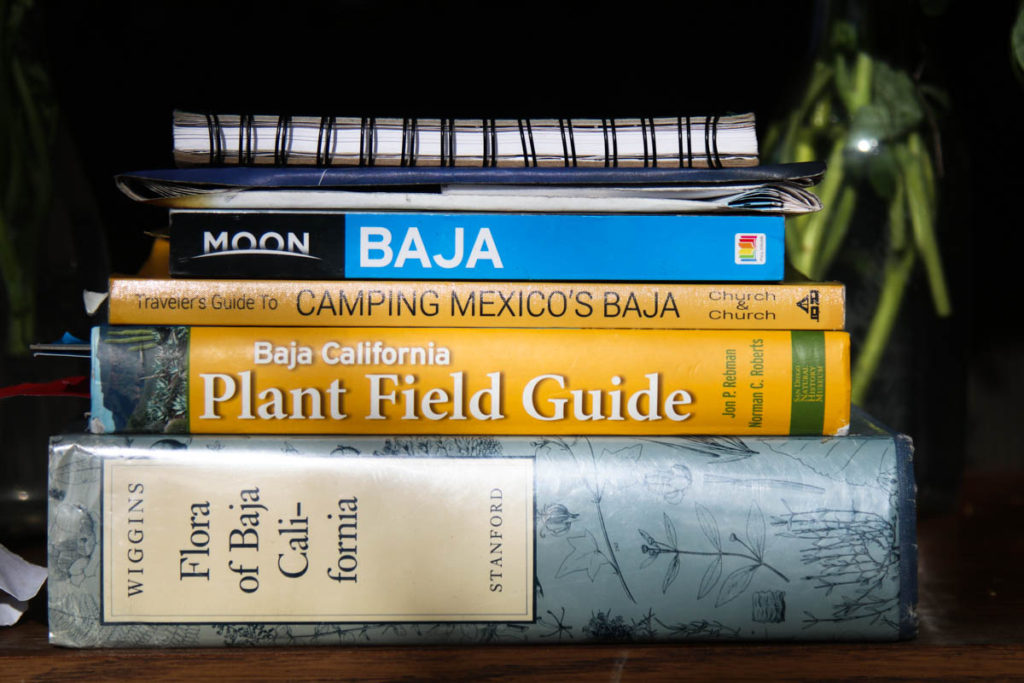
March 13 The Trip Begins
Abbe and I left the bustle of Los Angeles and headed down to Baja California, Mexico. We stopped at a Trader Joe’s in San Diego and loaded up the car with enough snacks to last us for much of the trip. We had some delays in LA so we were leaving a few days later than expected and I was hoping to get to Cataviña for my birthday. This was going to be a bit of a hectic trip, as we had to be back in LA by March 25 and it was about 1,120 miles one way to where we were hoping to see Damiana.
Besides Damiana, I wanted to revisit Cataviña a place I visited 15 years ago and was amazed by the interesting plant life there (especially the Boojum trees).
On day 1 we made it to Ensenada. There was some question whether we were at the right lodge as there was no one there, but the owner eventually came by and we had our room for the night.
The next morning we walked up a nearby hill that was covered with numerous wildflowers including Munz’s sage, Crown daisy, Blue dicks, Ground pink, Shooting stars, and Purple owl’s clover.
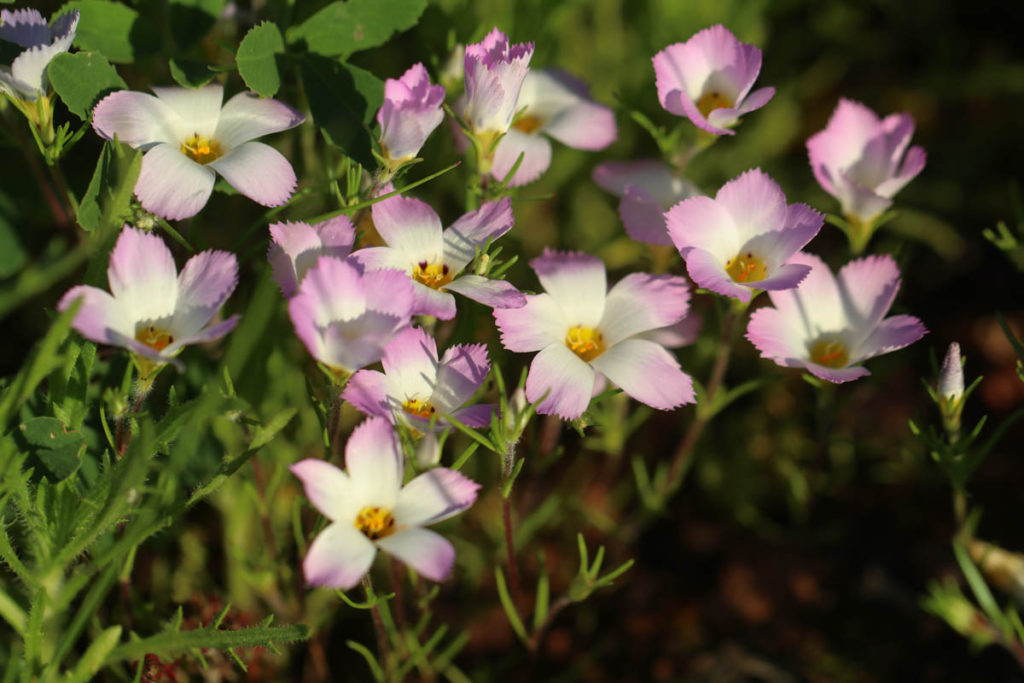

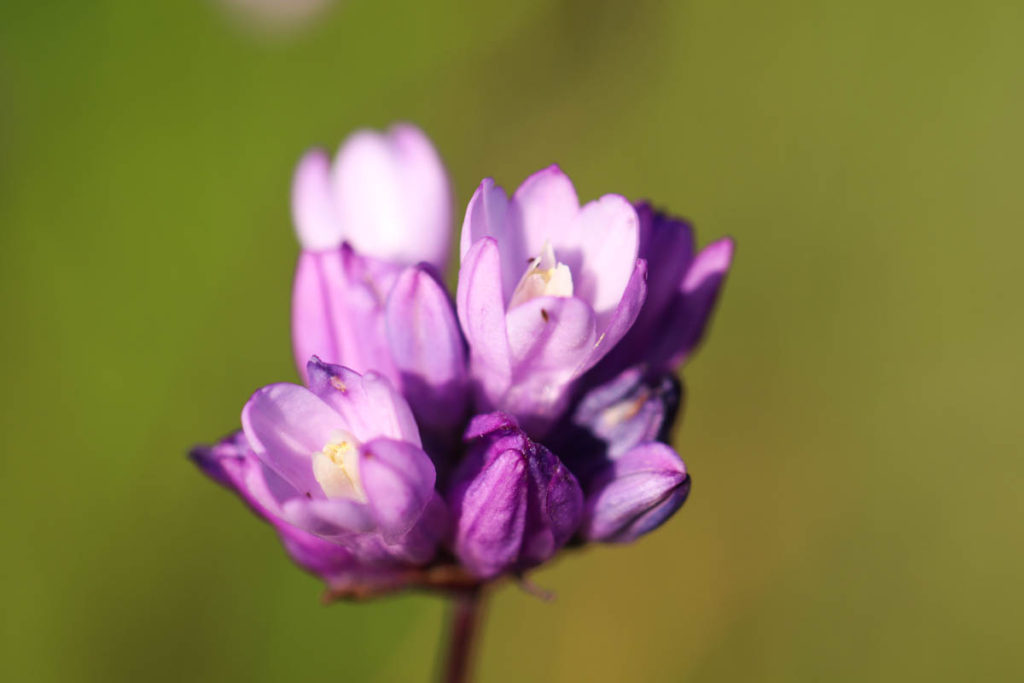

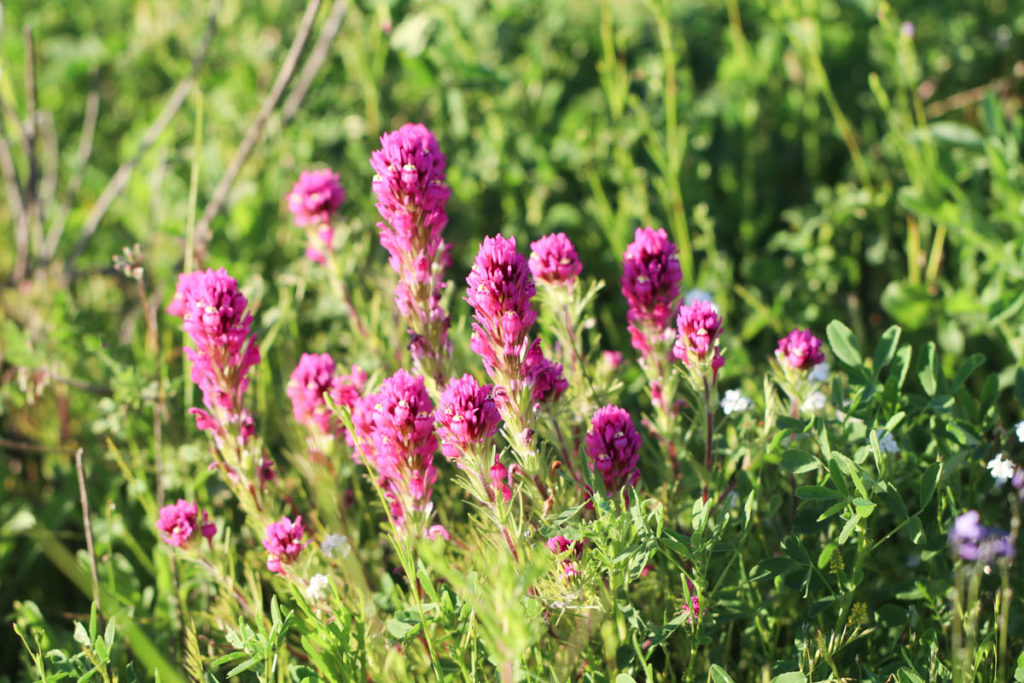
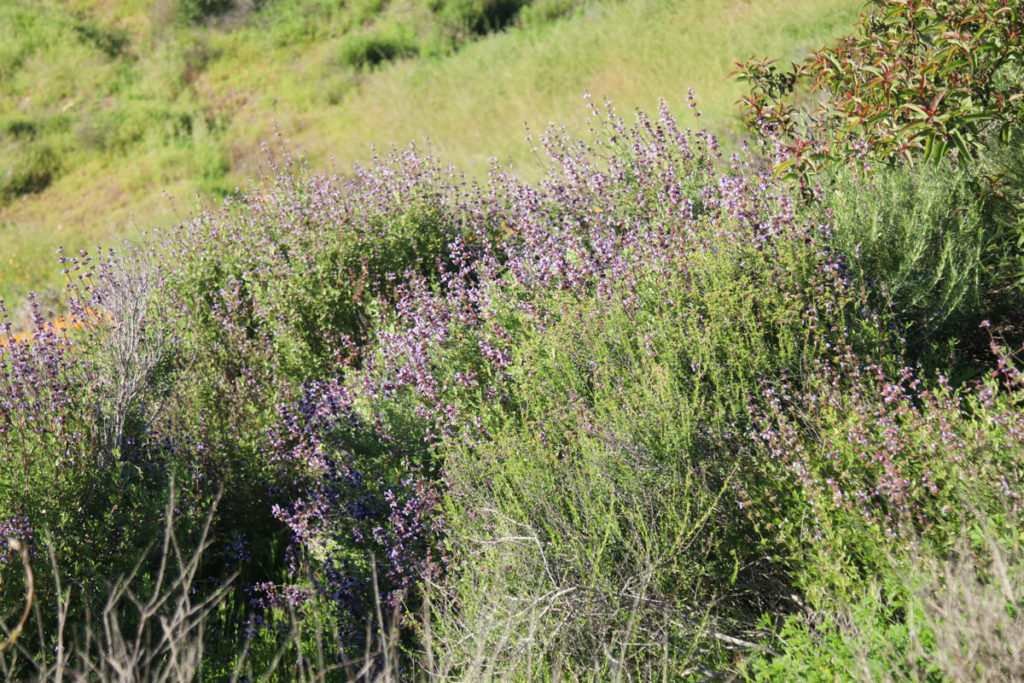
Ground pink (Linanthus dianthiflorus, white and pink-tipped flowers), Shooting star (Dodecatheon clevelandii ssp. insulare, downward facing pink and yellow flowers) Blue dicks (Dichelostemma capitatum, lavender flowers), Crown daisy (Glebionis coronarium, daisy-like flowers), Purple owl’s clover (Castilleja exserta, pink flowers) and, Munz’s sage (Salvia munzii, shrubs with blue flowers)
Later that day we took off for the desert and Cataviña. We were held up for quite a while by construction along the road. Fortunately, the landscape was draped with California poppy (Eschscholzia californica) affording a lovely view during the long wait.

A Practical Word about the Baja Gas Gap
On my last trip to Baja in 2004, we were flummoxed by the inability to purchase gas for 200 miles. Since this created obstacles in that trip, we prepared for it by filling up in El Rosario right before the ‘gas gap’ begins and also had a full five-gallon gas can. You will see most travelers carrying a few gas cans on their vehicle roofs in this region. While many cars can go 200 miles on a tank, if you do any extra driving in between then your only option is to purchase gas sold out of barrels on the side of the road in Cataviña, which seems sketchy. The first place to get gas is the very small town of Villa Jesus Maria. And while they do have a Pemex gas station, there is no sign for how much you will be paying and they only accept cash. It was a bit sketchy, so I suggest going another 25 miles to Guerrero Negro, which has a full-on gas station.

March 15-17 Cataviña
Not long after leaving Ensenada, the road moseys into the interior desert of Baja. With about an hour of sunlight left, we made it to Cataviña. First stop, the market (the only store besides a motel) to get ourselves a couple of cold drinks. Initially, we looked at a campground, but it seemed commercial-ish. Instead, we went down one of the many small dirt roads leading into the surrounding desert. We found one similar to where I went to in 2004 (yes, this part of the trip is mired in nostalgia for me) where we set up our tents and climbed up a rock mound to watch the sunset. This place is beautiful with fanciful plants. For any other desert rats out there, Cataviña is a place I suggest you visit. It’s not that easy to get to, but I think well worth it.

March 16 Birthday in Cataviña
As is likely obvious from the heading, March 16 is my birthday, my 61st this year. So it was a pleasure to wake up early, climb the rocky mound and watch the sunrise in this stunning landscape.


As is likely obvious from the heading, March 16 is my birthday, my 61st this year. So it was a pleasure to wake up early, climb the rocky mound and watch the sunrise in this stunning, landscape.
I spent the day walking amongst the fantastical Boojum tree (Fouquieria columnaris, Fouquieriaceae). This plant is one of the main reasons I wanted to go back to Cataviña. These are quite extraordinary ‘trees’. They are relatives of Ocotillo (Fouquieria splendens) and it is their unusual growth pattern that makes them so picturesque. Some of them just shoot straight up, and others take on modern dance poses. I will try to restrain myself from posting too many photos here, but I cannot resist at least a few. Note the ones where Abbe or I at their base, this gives a better idea of their size.

Abbe next to a Boojum 
Dancing Boojum 


7Song next to a Boojum 
A Boojum ‘person’ behind a Cardón cactus
Another remarkable plant in Cataviña is the giant Cardón cactus (Pachycereus pringlei, Cactaceae). They are huge (this must be said NY style, Yuge). Tight into my nostalgia mode, I took a photo of myself in a similar pose that I had in 2004

7Song- Cataviña 2019 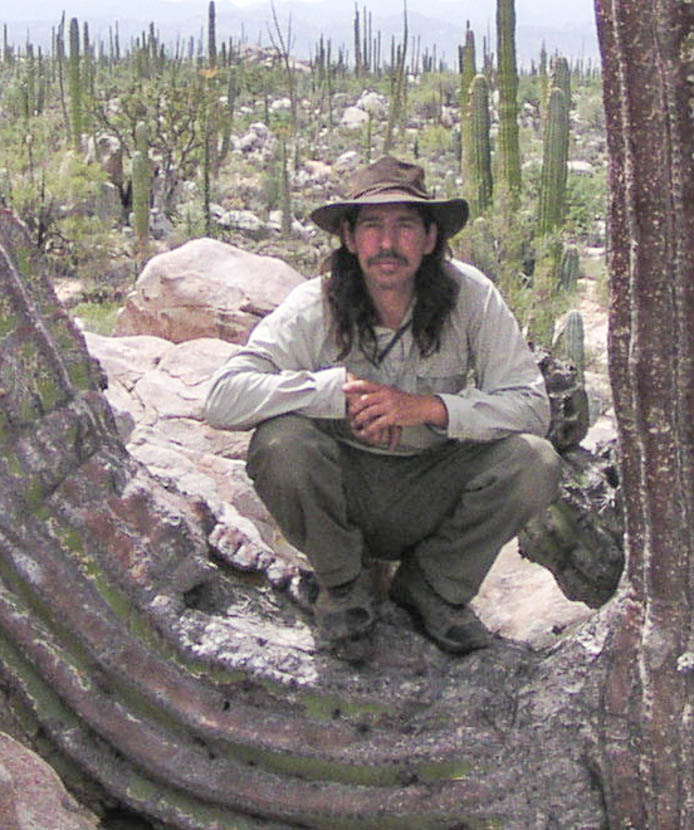
7Song-Cataviña 2004 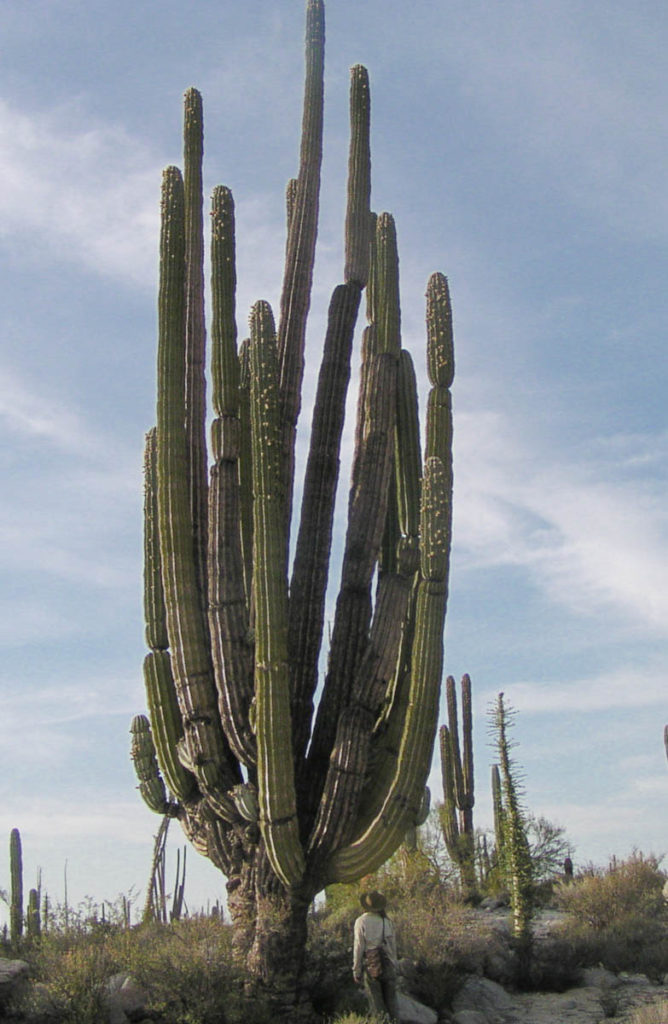
7Song next to Cardón 2004
There are many other interesting plants of Cataviña including, Senita (Pachycereus schottii, Cactaceae) the only ‘hairy’ cactus I know. Baja nightshade (Solanum hindsianum, Solanaceae). Fishhook cactus (Mammillaria dioica, Cactaceae). Newberry’s velvet mallow (Horsfordia newberryi, Malvaceae. Desert tea (Ephedra californica, Ephedraceae)

Senita 
Baja nightshade 
Fishhook cactus 
Desert tea 
Newberry’s velvet mallow
Unfortunately, we had to leave the following morning to search for our objective, the Damiana plant. There was still time for a long desert walk and a rocky mound sunrise. I hope to come back in a few years and spend a week or so exploring the various micro-regions and having more time to key out plants and animals. This is a special place for me.


Elephant Trees and Stout Trunks


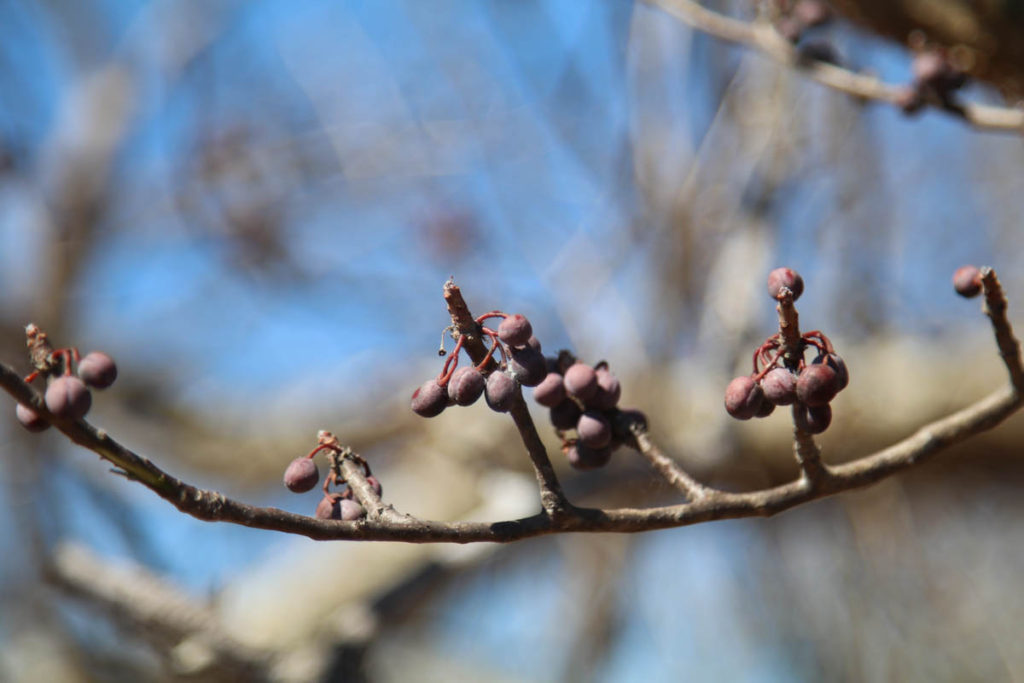



Many of the Elephant trees in the genus Bursera (of the Burseraceae) have a very fragrant resin that is used medicinally and as an incense. Myrrh and Frankincense are both in this family. Bursera microphylla is the most well-known of these Elephant trees and the only one of the genus to make it to the very southwestern portion of the US. Bursera species are common in the Baja desert and Abbe and I were tempted to gather some for medicine, but we were more focused on seeing Damiana. At some time, I’d like to go back to Baja and explore this interesting genus of plants.
March 17, Drive They Said
Now we were truly on our way to see if we can locate Damiana. Frankly, both Abbe and I were concerned that we might not find it but kept saying things such as “It’s fine if we don’t see Damiana, it has been an amazing trip anyway”. But really we were driving all this way to see this specific plant. It definitely lent an air of suppressed apprehension in the car.
That night we made it to Santa Rosalia and splurged on a motel with an ocean view.

March 18 A Final Push of Many Final Pushes
We spent part of the day driving down the amazingly aquamarine coast of the Sea of Cortez. Our goal was to get to La Paz, get a reasonable night’s sleep and start looking for Damiana in the morning.
March 19 We Meet Damiana and Get Quite Excited
On the morning of March 19, Abbe and I began our Damiana search in earnest. We were not exactly sure where we were going as most of the sources gave only general guidelines on where this plant grows.
We began driving and pulling over in likely locations. Neither of us had ever seen a live Damiana plant, so we spent a lot of time crushing and smelling leaves looking for the characteristic Damiana odor. We continued doing this throughout the morning with an anticipatory excitement that we might find it, and a background uneasiness that we might not. There were many other interesting plants along the way, but we were pretty focused on locating Damiana. In the early afternoon, we stopped and explored a ravine. Our frustration was starting to build with the hot desert climate and days of ceaseless driving contributing to this tension. We did not see any plants in the ravine and were getting back into the car when I spotted a small plant near the roadside with yellow flowers. I held my enthusiasm in check though it looked like some of the photos I had seen. And with one smell and I knew this might be Damiana. So I called over to Abbe and we both excitedly admired the plant. I then took out my Baja Flora and keyed it out. The only way to be sure of a plant’s identity is to check it against similar looking plants. And the botanical trait that solidified its identification was that the flowers had 5 stamens and 3 styles. While this is not rare, putting it in context with all the other plant’s characteristics, especially the unique aroma, said that had found what we were looking for. And the smell, ah, the smell of fresh Damiana is even more enchanting than the dried leaves. A stirring moment in the annals of my plant searches.
So we took lots of photos and nibbled on leaves and looked around for more plants, though we did not see any. Now our taste for Damiana was ignited and we knew what it looked like, and so we set out to find more plants.
Well, we did not have much luck for the rest of the day. We did see a few plants, and we were definitely developing our ‘Damiana eye’ but the plant seemed uncommon, at least where we were looking. We camped at an RV park on the beach and enjoyed the full moon rising over the ocean. We both had leftover exhilaration seeing a few Damiana plants and began plotting a course for the next day to see if we could find more.

Abbe with Damiana prime 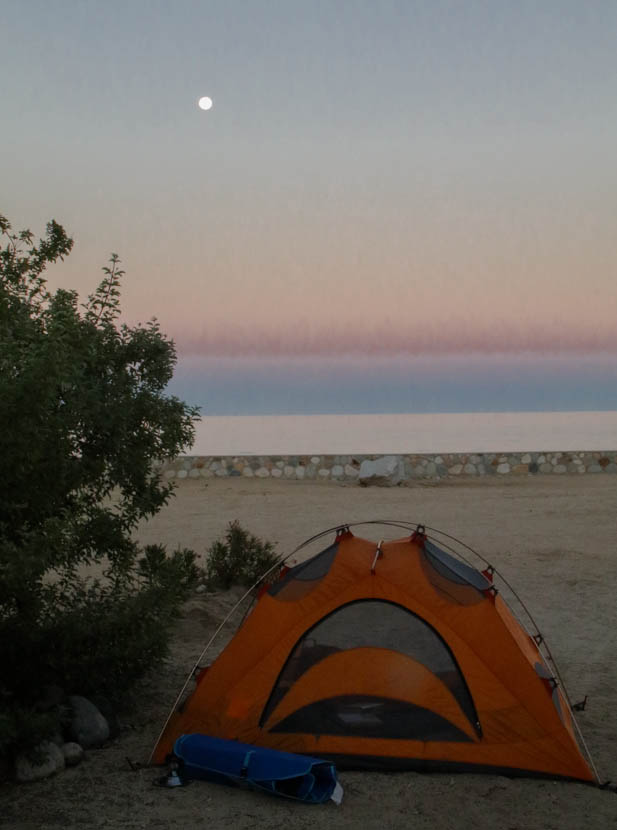
Full moon at RV campground in Los Barriles 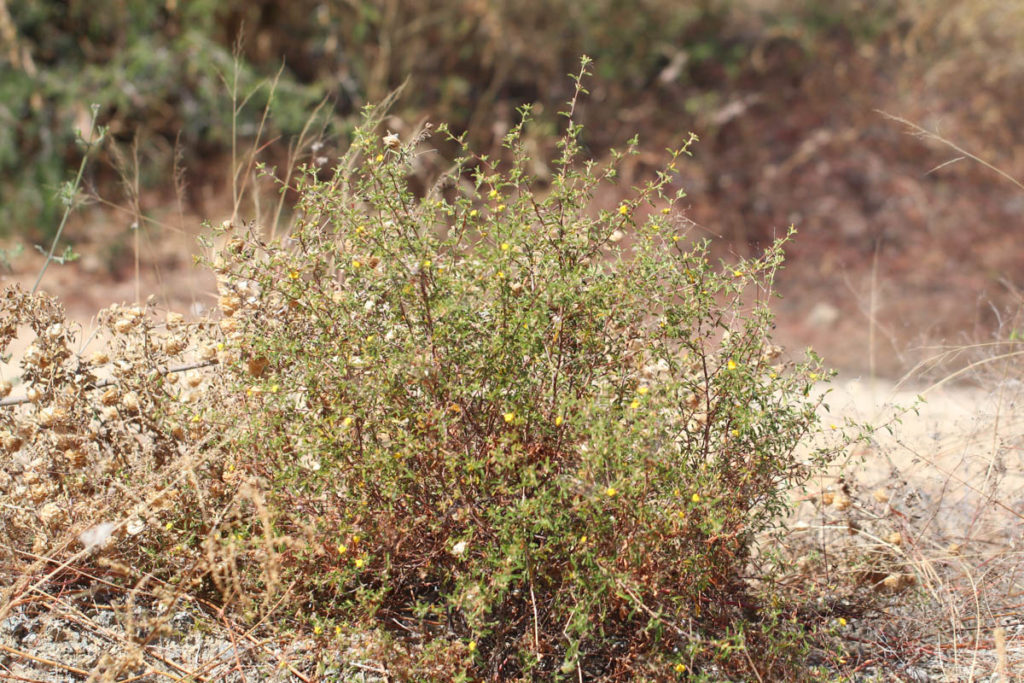
Our first Damiana plant 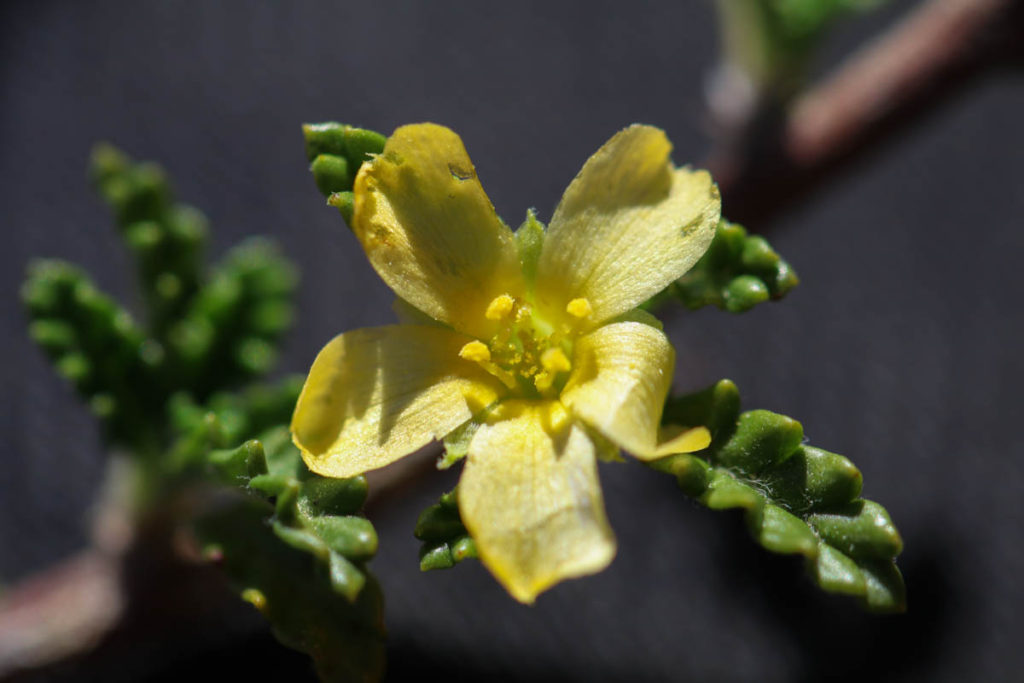
Damiana flower 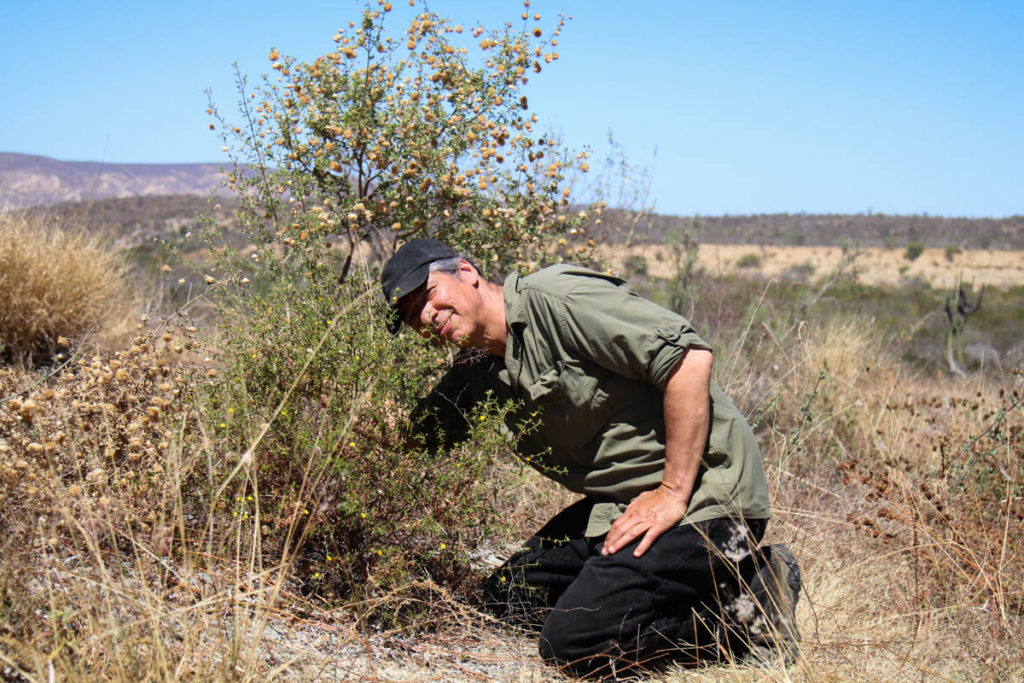
7Song with Damiana prime
A Mid-Point Note
One thing that I find very helpful is to make detailed notes on where I find plants (such as Damiana), and as importantly, places where they are scarce. I try to do this even if I don’t think I will be coming back because I may eventually go back to a specific location or I may share my notes with others who are interested (or write a blog about it 9 months later).
The same is true about labeling and organizing my photographs. I try to be fastidious about this so that I can find the photos later.
March 20 An unfruitful drive around the Cape
We spent the day driving around the cape (cabo in Spanish) of Baja. It was not a fruitful adventure as we saw very few Damiana plants. I also learned that I would like to avoid Cabo San Lucas (a resort area) as much as possible.
We ended up near El Pescadero and spent the next two nights in this sweet little casita.
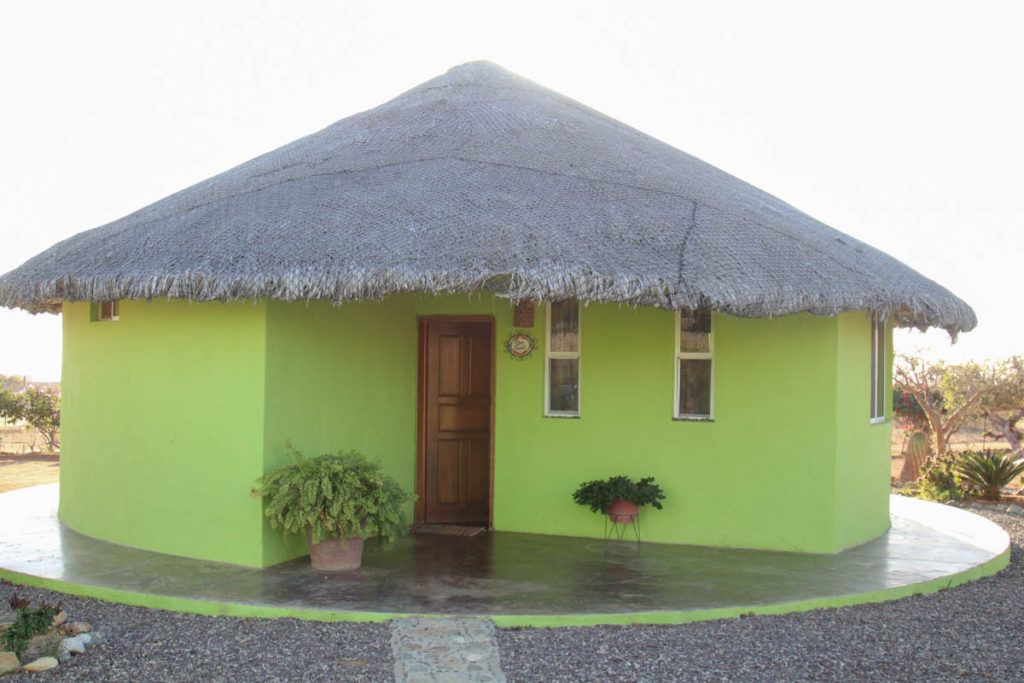
More Photos of Damiana
Below are more photos of Damiana (Turnera diffusa, Passifloraceae). This plant was, after all, the reason for this trip.

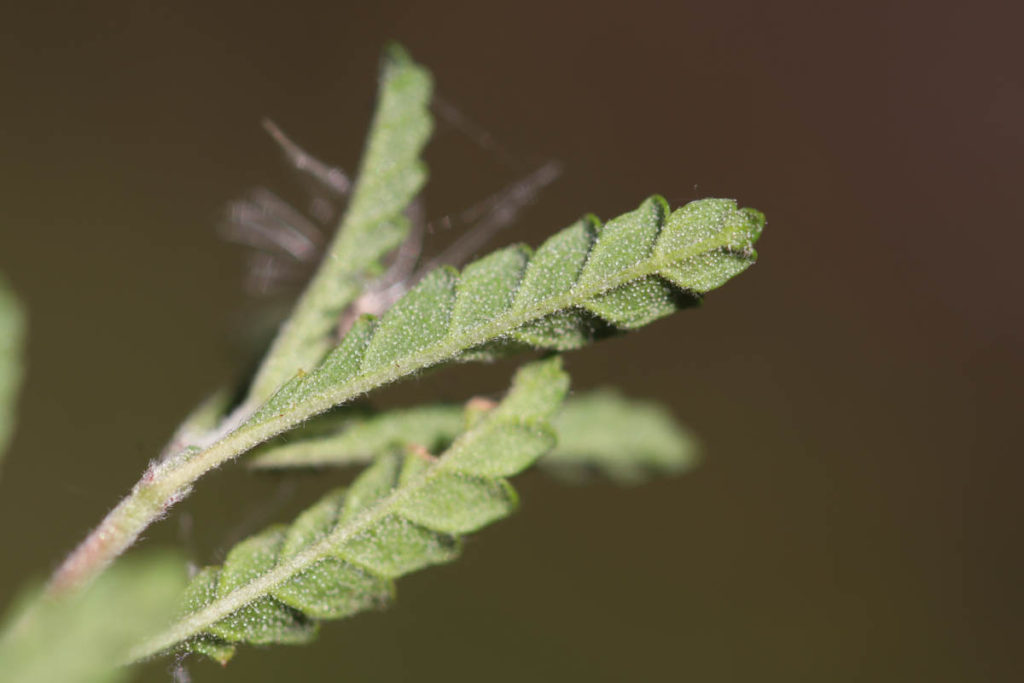
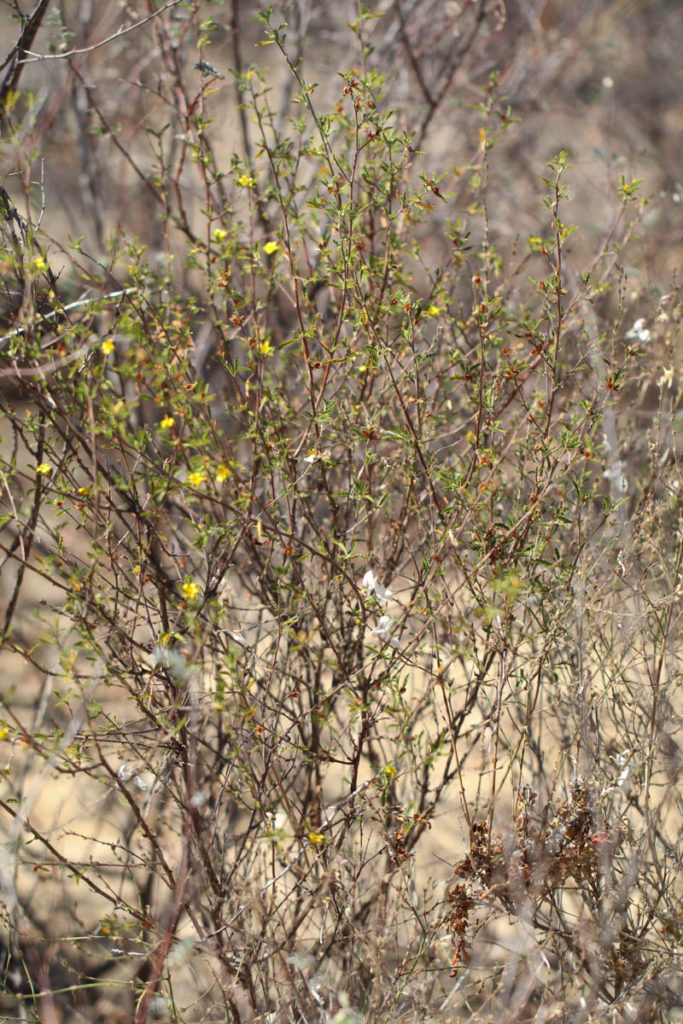

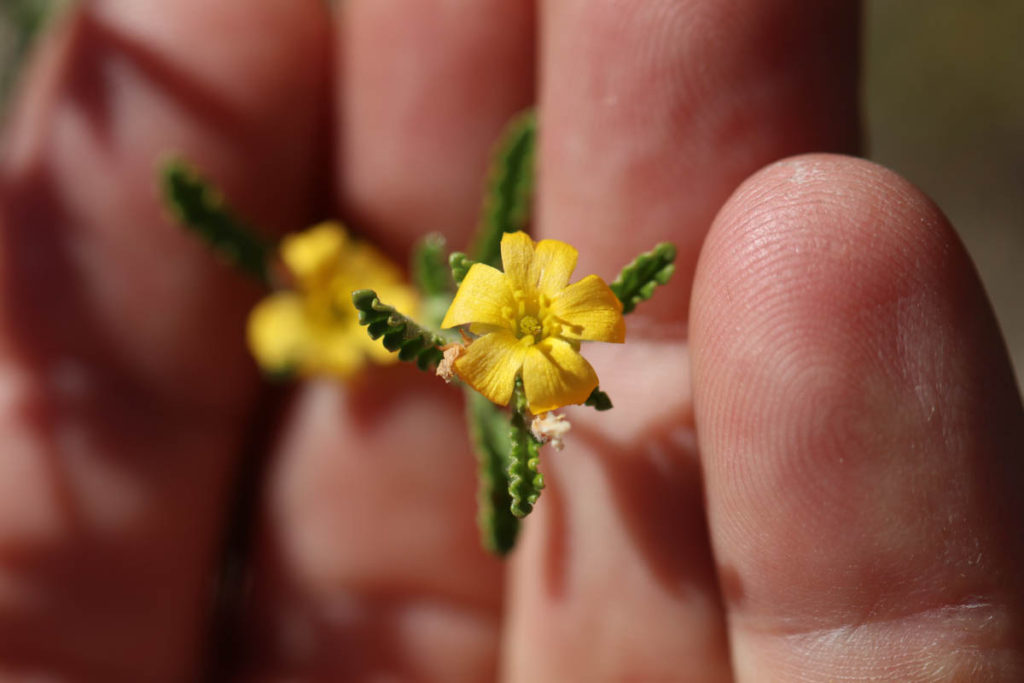
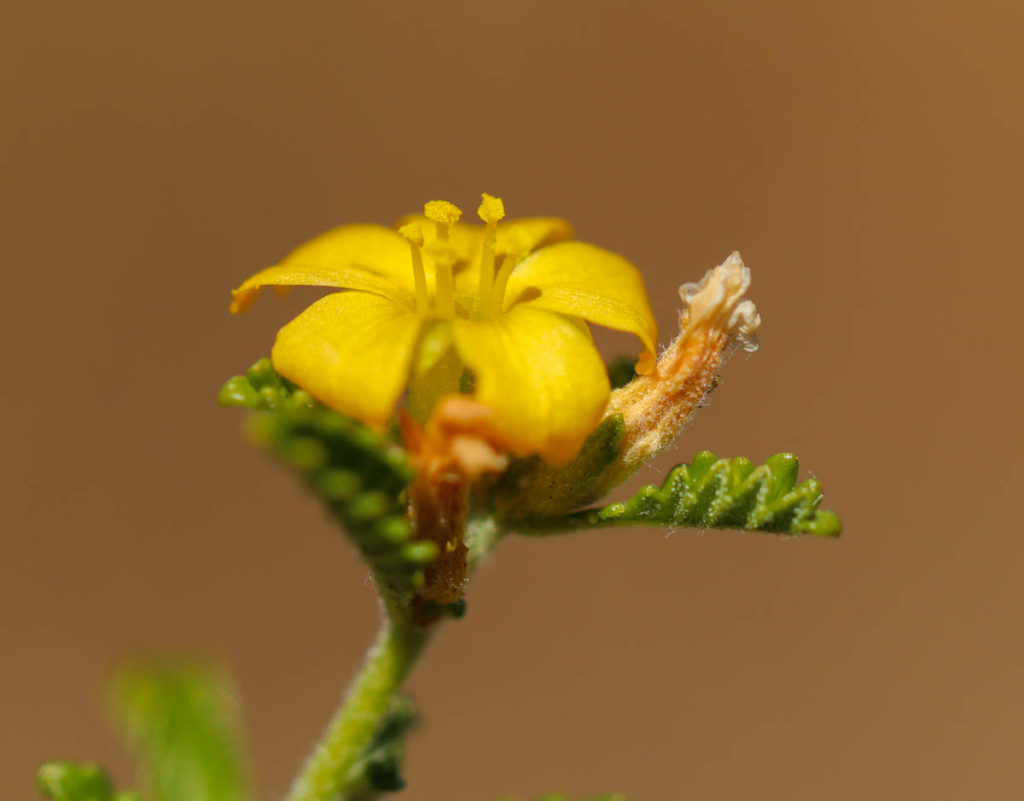



March 21 In the Land of Damiana
Today was the day we traveled the least and mostly stayed around our little casita.
We did stray outward for a little while and for the first time found small patches of Damiana plants in the Baja cape. Seeing more of these plants in their native environment was revivifying. That along with getting some rest from traveling, and finally meeting more of the local flora definitely made this one of the most relaxing and rewarding days of our trip. We could have easily spent more time there but unfortunately, we had to get back in a few days.
Abbe and I made a video discussing the uses of Damiana. For the first time, I felt like I was in the land of Damiana and got to see the environment where it grows more profusely.
I also took the time to walk around and start to identify other local plants. They included Baja fairy duster (Calliandra californica, Fabaceae), Hedgehog gourd (Cucumis dipsaceus, Cucurbitaceae) and Desert ruellia (Ruellia peninsularis, Acanthaceae)
One of the most interesting other plants I saw was the Desert passionflower (Passiflora arida, Passifloraceae). It was growing incongruously on a cactus, something I did not previously expect of a Passiflora species.
All in all, a rewarding relaxing day.
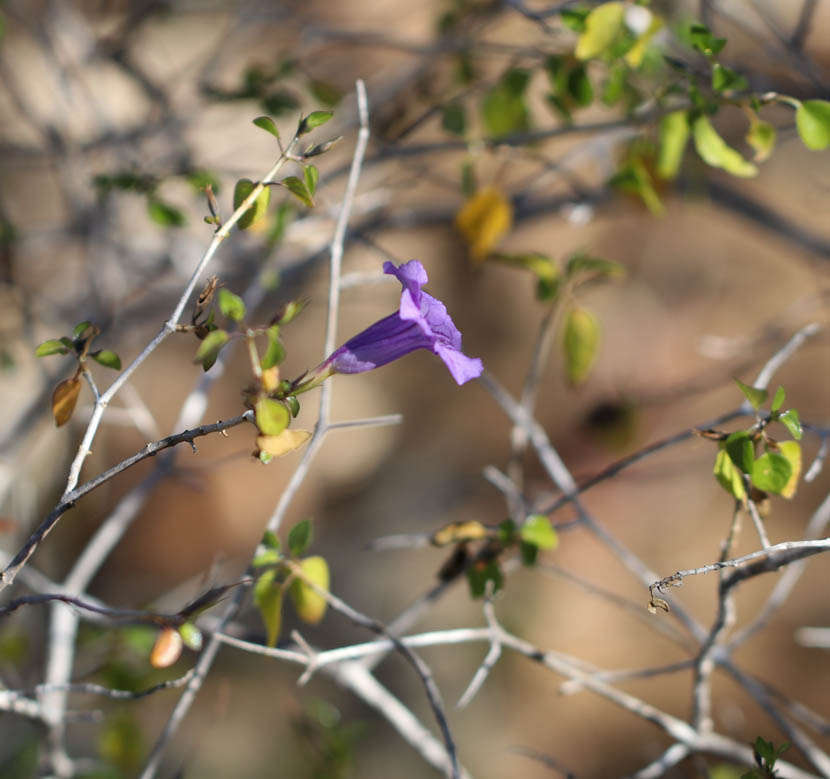
Desert ruellia 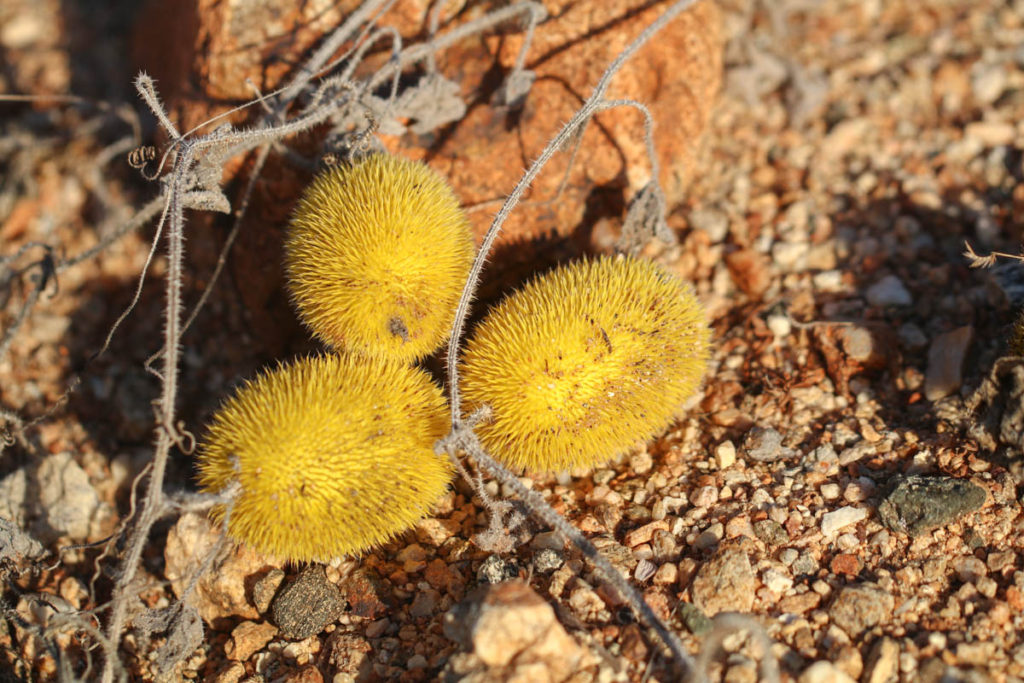
Hedgehog gourd 
Hedgehog gourd 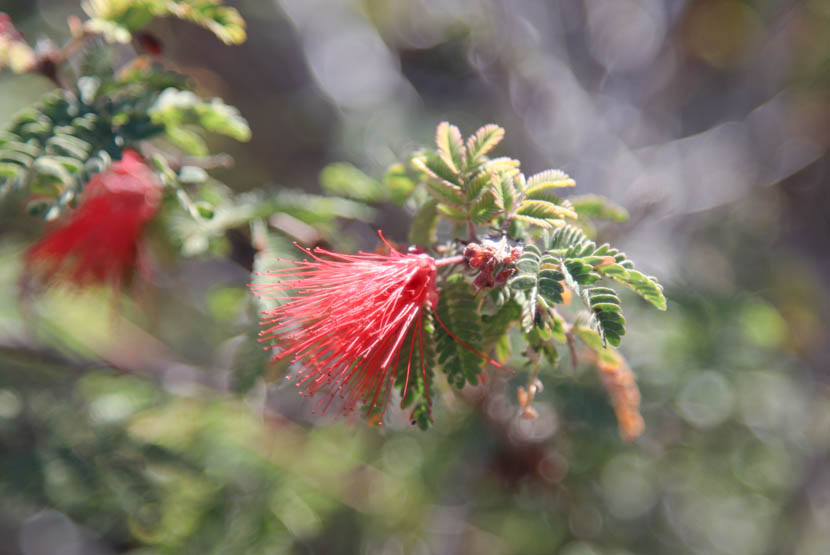
Baja fairy duster 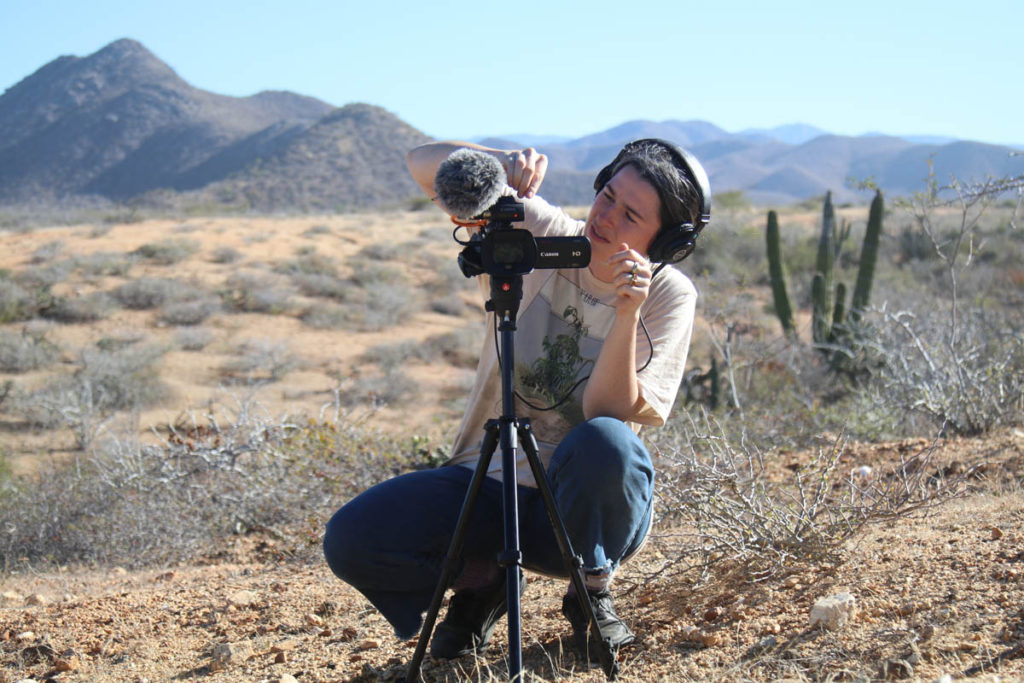
Damiana video 
Desert passionflower 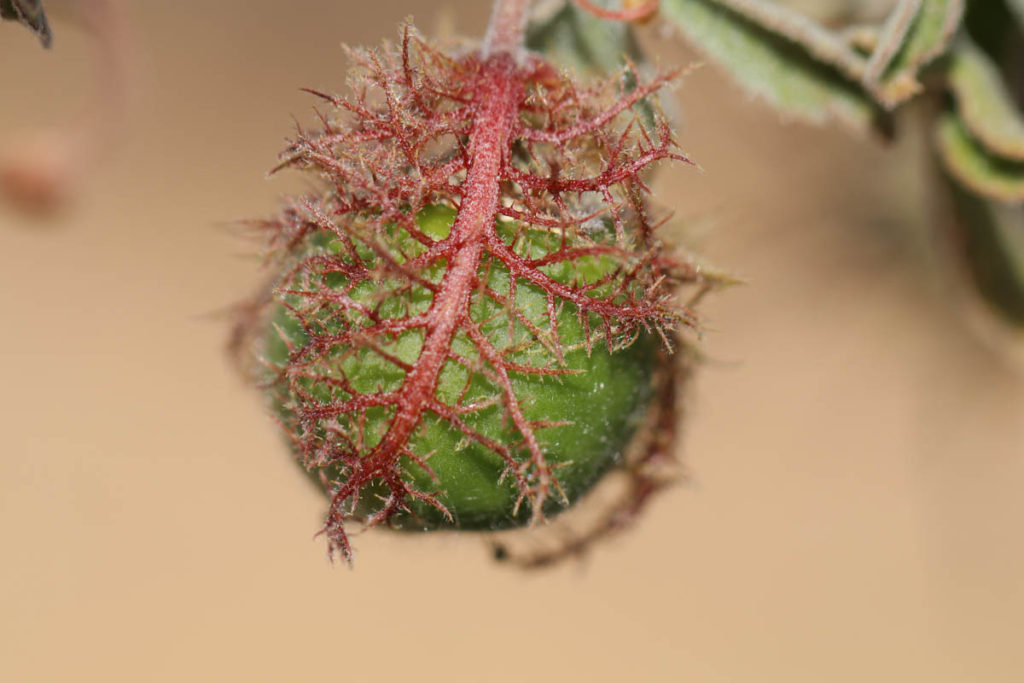
Desert passionflower fruit 
Desert passionflower
An Important Note about Damiana Scarcity
One of the difficulties of writing about medicinal plants is my concern that the information may cause people to overharvest them. This is doubly so when I am writing about an adventure where I found the plant, as it gives the means for others to find it. And it is triply problematic when the plants are not very common, as with Damiana. So I ask everyone reading this who is interested in Damiana to go to Baja and see this plant, but there is clearly not enough to gather. I will admit that Abbe and I gathered some leaves to make tea and have enough for a few sachet bags (it really is a delightful aroma) but not to make medicine, as this would require a lot more. Please be respectful and conscientious of gathering native wild plants. I have heard that in this part of Mexico there used to have a lot more Damiana, so either Abbe and I both missed seeing them and/or they have been overharvested. So once again I ask you to please not use this information to cause more medicinal plant carnage.
March 22-San Ignacio and Yerba Mansa
Today was a long-haul day as we needed to get back to the States tout suite. It was one of those unfortunate drives where you pass by places that you want to stop and explore but cannot. At the top of the places where we wanted to spend more time was along the Sea of California on the eastern coast. It is beautiful there, with Cacti meeting the turquoise blue waters, sandy spits jutting out into the water and a lot of quiet. This is another place I hope to make it back to someday.
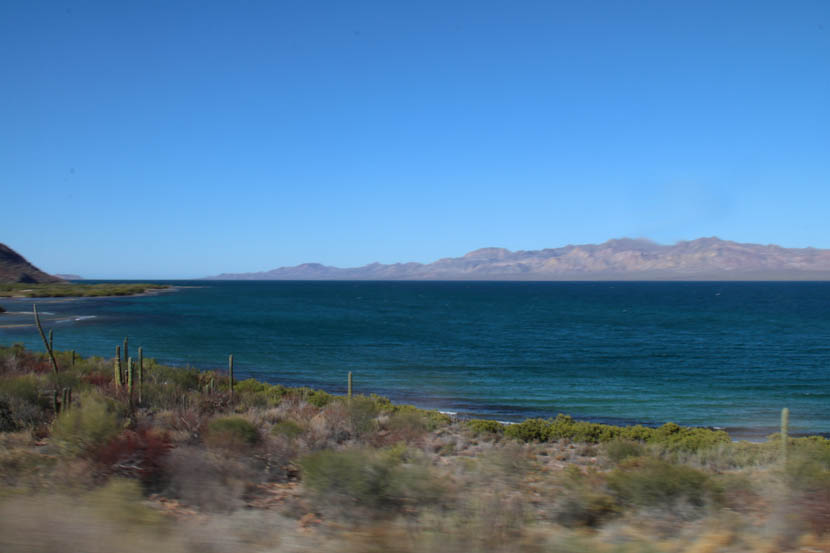
Much of the rest of our skedaddling was easier as it was mainly through huge tracts of desert. We decided that we would spend the night in San Ignacio as we were reading the Traveler’s Guide to Camping Mexico’s Baja and they had a lot of praise for the Rice and Beans hotel and restaurant in this town. We were relieved to arrive there, tuckered out from our expedited journey. But as soon as we arrived at Rice and Beans we started having our doubts due to the disheveled nature of the place. The camping spots were on the pavement in the parking lot and many of the rooms had broken windows. So Abbe and I pushed off in search of a new place to sleep as the sun began to set. We stopped at a campground along a pond (San Ignacio is an oasis), and I went to speak with the groundskeeper about staying there the night. As I parked the car, I saw in the headlights what looked like Yerba mansa (also known as Yerba manso) plants. As I got out, I indeed saw a profusion of these plants, which of course excited me. We spent the night there and in the morning we made a video of this medicinal plant. And it was good to be near freshwater. Unfortunately, we had to leave in the morning; otherwise, I would have liked to spend the day there. I asked the groundskeeper about the Yerba manso with my terrible Spanish, and he knew that it was a medicinal plant. There is something reaffirming when people know the local medicinal plants, a spark to keep local herbal medicine alive.
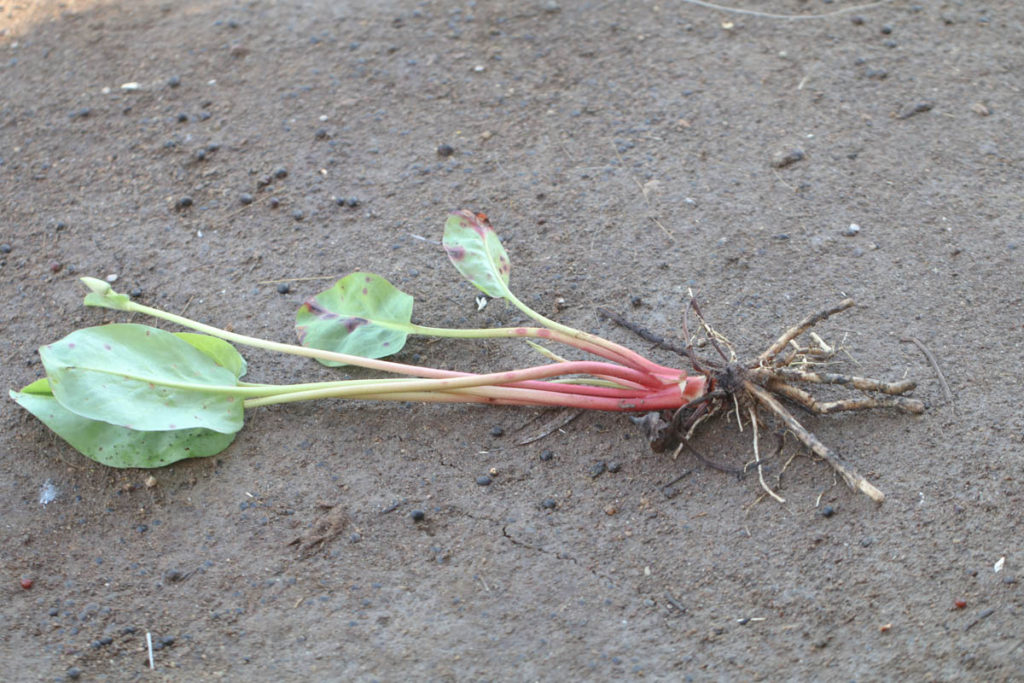
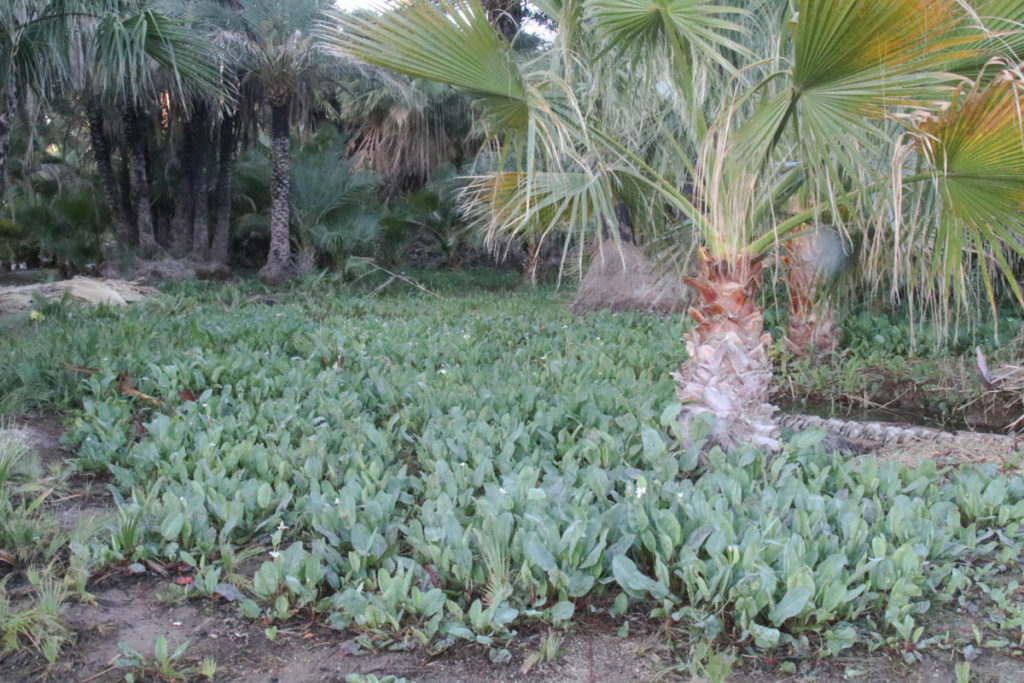
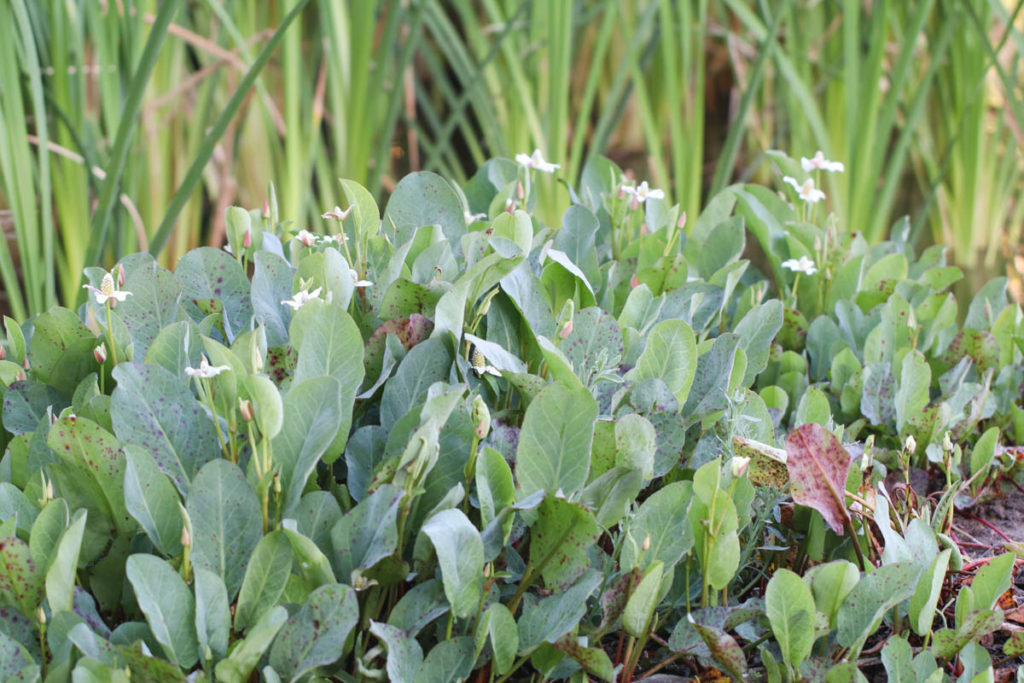

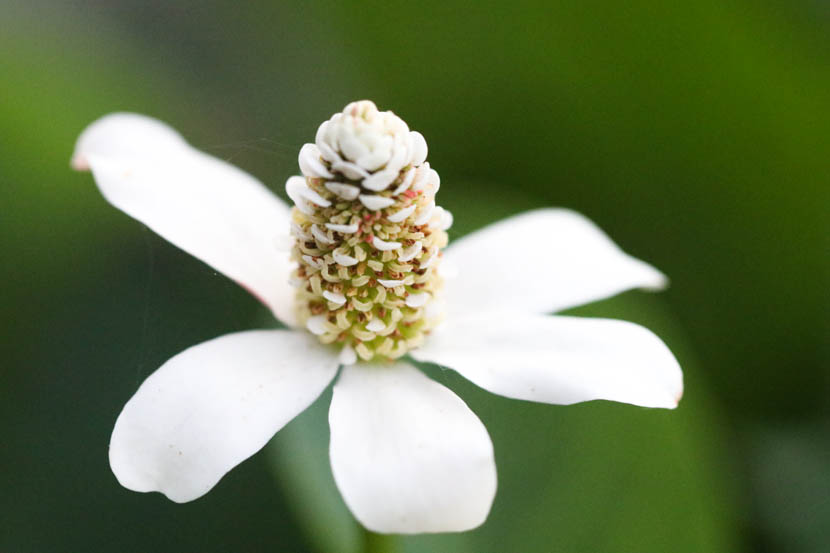
Yerba mansa inflorescence
March 24 Waiting at the Tijuana Border
Abbe and I got to the Tijuana border around 11 am. We were going to meet friends in the Cleveland National Forest and thought we would have plenty of time with them before leaving for LA the next day. Little did we know what lies ahead. The traffic was stopped way before the border crossing. The first 45 minutes seemed odd as we were on a side road miles before the border crossing and the traffic did not move at all. Also, the police put police tape behind our vehicle so no one could get in or out. We finally started crawling forward, which began the very slow journey to the border crossing. We eventually got there at 4:30 pm, a tediously long time. All along the route, there were vendors selling juices, popsicles and other food along with dolls on sticks, window shade cloths, copperware, turtle statues and plant holders shaped as Groot from Guardians of the Galaxy. It did make the long wait a little more entertaining. The only thing we purchased was a roasted corn on the cob which was so dry as to be inedible. Fortunately, we still had some of our Trader Joe snacks with us.
The biggest problem with any long wait is peeing. In anticipation, I had peed at the last stop and had consumed very little fluid. But in the end, urination happens, and so we cut off the top of a plastic water bottle for our makeshift urinal. And if you are asking, why not just get out of your non-moving car and go to the side of the road, the answer is about 8 lanes of stagnant traffic and no apparent discrete places.
When we finally got to the border the agent took our passports asked to see the inside of the car. He looked around the car with a flashlight for about 20 seconds and then asked Abbe if she was Abbe, which she applied in the affirmative, and then said we could go. Mega-hoorays, out of traffic and on our way again.
Soon after getting to California we went to In and Out Burger as that was Abbe’s choice. It was packed and it took about 20 minutes to get an order though I did appreciate the fries and chocolate shake.
Instead of meeting our friends at the campground at 2 pm we finally arrived around 7ish. But there we were with a campfire, good company, and tales to tell and listen to.

Tijuana Border Crossing 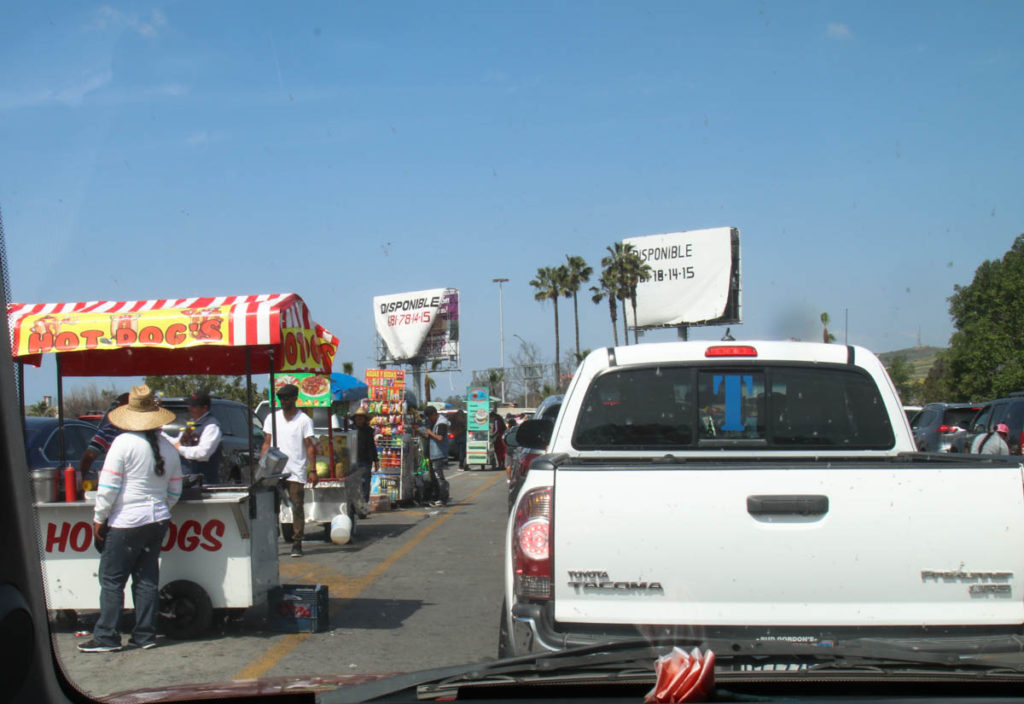
Tijuana Border Crossing
March 25 Cleveland National Forest and Back to Los Angeles
In the morning I wandered around the campground was delighted and surprised to see all of the Wild peony (Paeonia californica, Paeoniaceae) growing there. This is one of my favorite plants for a number of estrogen/progesterone imbalances. And it was in full flower, which was marvelous to see, as it is such a sprightly bloom. This was not a gathering trip, so I just took in their beauty as well as enjoying the scenery in this part of the country. We then had breakfast with our friends and headed back to Los Angeles.

Wild peony 
Wild peony 
Wild peony
I was glad and disappointed to be getting back to the city. Glad as it had been a whirlwind trip and I looked forward to not getting in a car and traveling every day. And disappointed as it was a fun adventure and I wanted to see more plants before heading back to the cold Northeast.
We saw a car in flames on the highway as well as a carpeted hillside of California poppies (Eschscholzia californica). And then there was the inevitable LA traffic, and finally my temporary LA home.
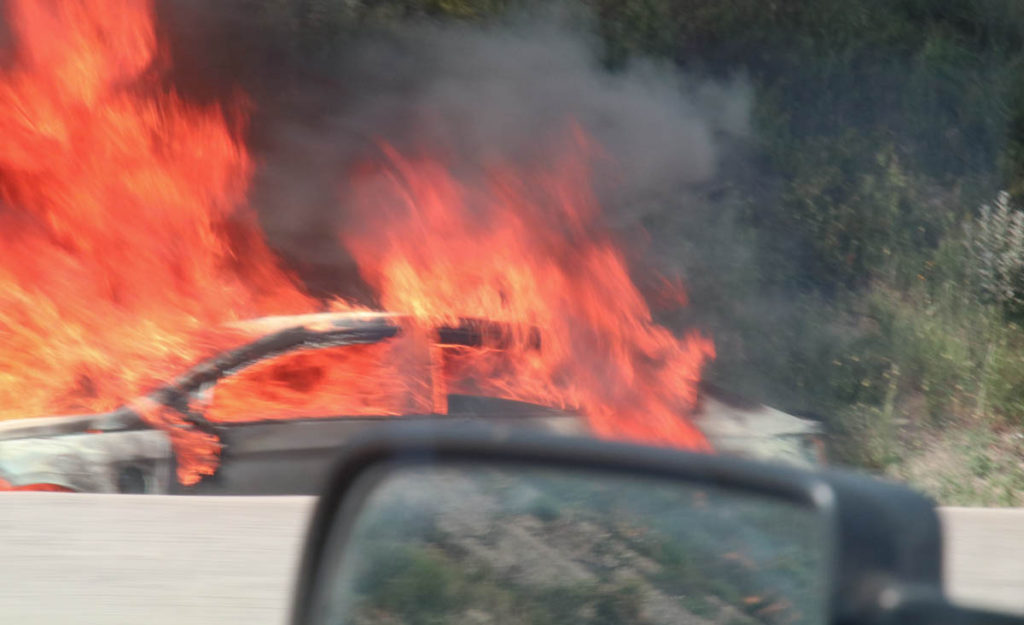
Car on fire 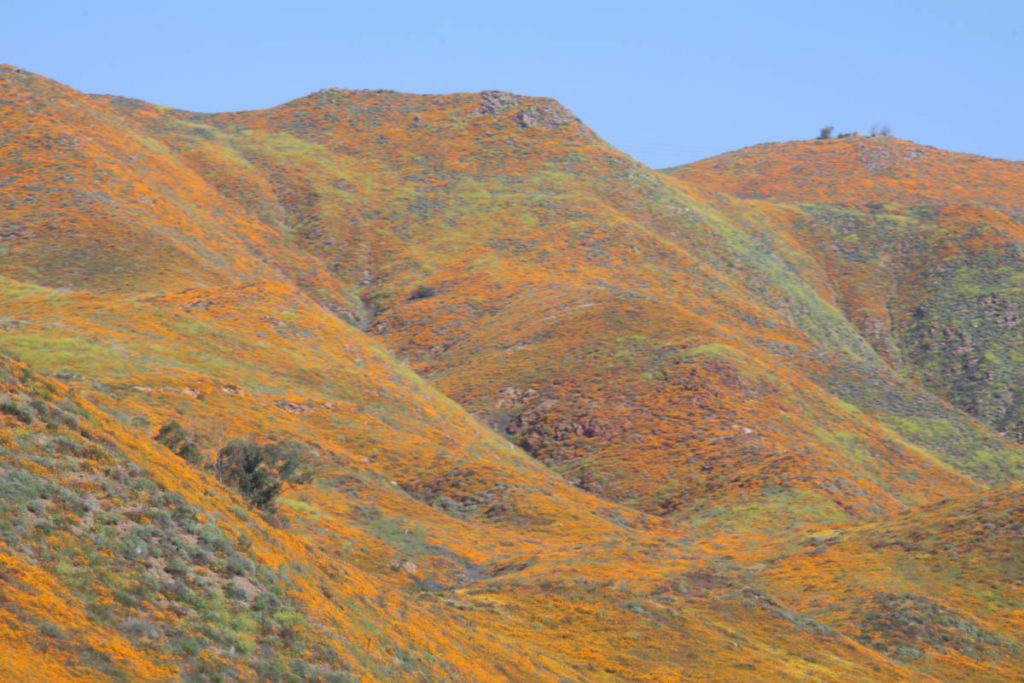
Hillside of California poppy 
LA traffic
December 2019 Here and Now
I’m not sure who will read this, but if you are that person, I hope you have enjoyed it. I reckon it is most useful for other plant explorers going to Baja California. I am glad I went there though I am sorry I didn’t have more time to explore the plants and other aspects of this region. In the upcoming weeks, I hope to post a downloadable Damiana monograph as well as some of the videos Abbe made. Thank you for coming by and please leave any comments below. ~7Song December 9, 2019
